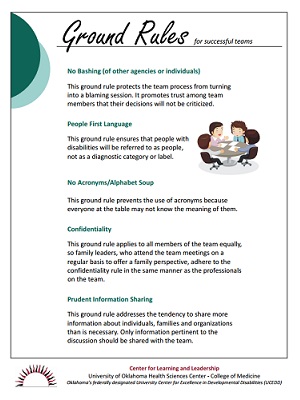The Power of Community: An Overview of Support Groups
Support groups have long been recognized as essential resources for individuals navigating various life challenges. These communities foster a sense of belonging, encouraging emotional expression and promoting personal growth. By bringing together people with shared experiences, support groups create safe spaces for open dialogue, empathy, and understanding. Learning how to build support groups effectively can significantly impact the lives of countless individuals, offering them invaluable connections and resources.
Identifying the Need: Target Audience and Purpose
To build a successful support group, it is crucial to establish a clear understanding of the target audience and the group’s purpose. Defining these elements ensures a strong foundation for the support group and helps attract members who will benefit from the community. Here, we will explore various support group themes and the importance of tailoring the group’s focus to the needs of the intended audience.
Support Group Themes
Support groups can address a wide range of topics, catering to diverse needs and interests. Some common themes include:
- Health conditions: Groups focused on specific medical issues, such as cancer, diabetes, or mental health disorders, provide a platform for individuals to share experiences, discuss treatments, and offer emotional support.
- Life transitions: Groups dedicated to major life changes, such as becoming a parent, entering retirement, or coping with grief, help members navigate these transformative periods and build connections with others in similar situations.
- Shared interests: Groups centered around hobbies, artistic pursuits, or professional development allow members to explore their passions, learn from one another, and strengthen their bonds through shared experiences.
Defining the Target Audience
Once you have identified the support group’s theme, it is essential to define the target audience. Consider factors such as age, gender, geographic location, and specific needs or challenges. A well-defined target audience enables you to create tailored promotional materials, recruit members effectively, and facilitate meetings that address the unique concerns and interests of the group’s members.
Establishing the Group’s Purpose
A clear and concise purpose statement helps potential members understand the value of the support group and what they can expect from participation. The purpose statement should address the group’s primary objectives, such as:
- Providing a safe space for emotional expression and support
- Sharing resources, information, and coping strategies
- Fostering personal growth and resilience
- Advocating for awareness and understanding of the group’s theme
By defining the target audience and purpose, you create a solid foundation for your support group, ensuring that it meets the needs of its members and fosters a sense of belonging, emotional expression, and personal growth.

Establishing the Ground Rules: Guidelines for Productive Conversations
Setting ground rules is essential for creating a safe, respectful, and supportive environment within your support group. Clear guidelines help members understand what is expected of them and foster an atmosphere conducive to open dialogue and personal growth. Here, we will discuss suggestions for rule creation and the importance of enforcing these guidelines consistently.
Suggestions for Rule Creation
When establishing ground rules for your support group, consider incorporating the following elements:
- Confidentiality: Encourage members to respect the privacy of others by not sharing sensitive information discussed during meetings outside the group.
- Active listening: Promote attentive and engaged communication by asking members to focus on the speaker, avoid distractions, and refrain from interrupting.
- Non-judgmental communication: Foster a space where members feel comfortable expressing themselves without fear of criticism or judgment by emphasizing the importance of empathy and understanding.
- Respect: Establish a standard of mutual respect, ensuring that members treat one another with kindness and consideration, even when disagreements arise.
- Honesty: Encourage authenticity by promoting honesty and transparency among members, allowing them to share their true feelings and experiences.
Enforcing Ground Rules
Consistently enforcing ground rules is crucial for maintaining a positive atmosphere within your support group. As the facilitator, it is your responsibility to:
- Review the ground rules at the beginning of each meeting
- Remind members of the rules when necessary
- Address any violations promptly and fairly
- Modify the rules as needed to better serve the group’s evolving needs
By establishing and enforcing ground rules, you create a safe and supportive space where members can engage in productive conversations, fostering a sense of belonging, emotional expression, and personal growth. This foundation is crucial for building a successful support group that meets the needs of its members.

Recruiting Members: Outreach Strategies and Techniques for How to Build Support Groups
Recruiting members is a crucial step in building a successful support group. Attracting and engaging individuals who can benefit from and contribute to your group is essential for fostering a strong community. Here, we will explore effective methods for reaching potential members and creating compelling promotional materials.
Identifying Target Audience
Before implementing outreach strategies, it is vital to define your target audience. Consider the following factors:
- Demographics: Age, gender, location, and other relevant factors
- Interests: Shared experiences, challenges, or goals
- Purpose: The specific issue or theme your support group addresses
Effective Outreach Strategies
Once you have identified your target audience, consider the following outreach strategies:
- Online advertising: Utilize social media platforms, search engines, and other online resources to target your audience with promotional materials.
- Social media promotion: Share information about your support group on relevant social media channels, engaging with potential members and sharing valuable content.
- Community outreach: Connect with local organizations, support groups, and community centers that cater to your target audience, offering to present or collaborate on events.
- Referral programs: Encourage existing members to invite friends, family, or colleagues who may benefit from joining your support group.
Creating Compelling Promotional Materials
To attract potential members, create promotional materials that are:
- Clear and concise: Communicate the purpose, benefits, and structure of your support group effectively.
- Visually appealing: Use images, colors, and layout to create an engaging and professional appearance.
- Accessible: Ensure that your promotional materials are easy to understand and available in various formats, such as print, digital, and audio.
- Personal: Share stories, testimonials, or experiences to demonstrate the value of your support group and create an emotional connection with potential members.
By employing these outreach strategies and creating compelling promotional materials, you can effectively recruit members and build a strong foundation for your support group, fostering a sense of belonging, encouraging emotional expression, and promoting personal growth.

Facilitating Meetings: Techniques for Encouraging Open Dialogue in How to Build Support Groups
Facilitating support group meetings effectively is crucial for fostering open dialogue, promoting personal growth, and maintaining a positive atmosphere. Here, we will share best practices for leading support group meetings and discuss the role of the facilitator in ensuring that all voices are heard.
Preparing for Meetings
To ensure successful meetings, consider the following:
- Set an agenda: Outline the topics to be discussed, allocate time for each item, and share it with members beforehand.
- Create a welcoming environment: Choose a comfortable, accessible location and arrange the seating to encourage interaction.
- Establish ground rules: Remind members of the group’s guidelines, emphasizing confidentiality, active listening, and non-judgmental communication.
Leading Meetings
During the meeting, focus on the following:
- Encourage participation: Invite members to share their thoughts, feelings, and experiences, ensuring everyone has an opportunity to contribute.
- Manage time effectively: Keep track of the agenda, allowing sufficient time for each topic and adjusting as needed.
- Maintain a positive atmosphere: Acknowledge members’ contributions, validate their emotions, and promote constructive conversations.
- Facilitate group discussions: Guide the conversation, asking open-ended questions, summarizing key points, and encouraging connections between members’ experiences.
Addressing Challenges
As a facilitator, be prepared to address challenges that may arise, such as:
- Dominant personalities: Encourage quieter members to participate by acknowledging their contributions and asking for their input.
- Conflicting opinions: Validate all viewpoints, emphasize shared experiences, and guide the group toward understanding and empathy.
- Emotional overload: Offer support, reassure members that it’s okay to take breaks, and remind the group of available resources.
By employing these techniques, you can facilitate engaging and productive meetings, ensuring that your support group remains a safe, respectful, and supportive environment for all members. This, in turn, fosters a sense of belonging, encourages emotional expression, and promotes personal growth in your how to build support groups journey.
Maintaining Momentum: Strategies for Long-Term Success in How to Build Support Groups
A crucial aspect of how to build support groups is ensuring their long-term success. Maintaining momentum is essential for keeping members engaged and fostering a sense of belonging. Here, we will offer guidance on how to keep the support group active and engaging over time, including regular check-ins with members, continuous improvement of group dynamics, and addressing any challenges that arise.
Regular Check-ins with Members
Periodic check-ins with members can help you understand their evolving needs and assess the group’s effectiveness. Consider the following check-in methods:
- One-on-one conversations: Schedule private discussions with members to gather feedback, address concerns, and provide support.
- Anonymous surveys: Distribute surveys to gather honest feedback about the group’s strengths, weaknesses, and areas for improvement.
- Group discussions: Allocate time during meetings for members to share their experiences, challenges, and suggestions for the group’s development.
Continuous Improvement of Group Dynamics
Regularly evaluate and adjust the group’s dynamics to maintain a positive atmosphere and ensure that all voices are heard. Here are some strategies:
- Adapt the agenda: Modify the meeting agenda based on members’ feedback and the group’s changing needs.
- Encourage diverse perspectives: Invite guest speakers, share resources, and promote discussions on various topics to keep meetings fresh and engaging.
- Monitor group dynamics: Stay attuned to the group’s dynamics, addressing any issues or conflicts that may arise, and adjusting facilitation techniques as needed.
Addressing Challenges
Anticipate and prepare for challenges that may impact the group’s momentum. Some common challenges include:
- Waning interest: Reinvigorate members’ engagement by introducing new topics, activities, or guest speakers.
- Membership fluctuations: Maintain a consistent group size by actively recruiting new members and providing support for those who may be leaving.
- Burnout: Prevent facilitator burnout by sharing leadership responsibilities, seeking support from other members, and taking breaks when needed.
By implementing these strategies, you can maintain the support group’s momentum, ensuring that it remains an active, engaging, and supportive community for its members. This, in turn, fosters a sense of belonging, encourages emotional expression, and promotes personal growth in your how to build support groups journey.

Evaluating Impact: Measuring the Success of Your Support Group
An essential aspect of how to build support groups is assessing their effectiveness and impact. Regular evaluation helps you understand the group’s strengths, identify areas for improvement, and adapt to the evolving needs of its members. Here, we will explore various methods for measuring the success of your support group, such as member surveys, testimonials, and observing improvements in group cohesion and individual well-being. Emphasizing the importance of ongoing evaluation and adaptation to meet the evolving needs of the group.
Member Surveys
Distributing surveys to group members can provide valuable insights into the group’s effectiveness. Consider asking questions about:
- Members’ satisfaction with the group’s structure and dynamics
- The impact of the group on members’ emotional well-being
- Areas for improvement or suggested changes
Testimonials
Collecting testimonials from members can offer a qualitative measure of the group’s success. Testimonials can:
- Highlight personal experiences and growth
- Demonstrate the value of the group to potential members
- Identify specific aspects of the group that resonate with members
Observing Improvements in Group Cohesion and Individual Well-Being
Monitoring the group’s dynamics and individual members’ progress can help you assess the group’s impact. Look for signs of:
- Increased participation and engagement
- Improved communication and trust among members
- Members’ growth in self-awareness, self-expression, and self-care
By incorporating these evaluation methods, you can continually refine your support group, ensuring it remains a valuable resource for its members. Regular assessment and adaptation are crucial components of how to build support groups that foster a sense of belonging, encourage emotional expression, and promote personal growth.
Expanding Your Reach: Leveraging Technology for Broader Connections
In today’s digital age, technology can be a powerful tool for how to build support groups that connect with a wider audience. By incorporating technology into your support group, you can create an inclusive, accessible online community that fosters a sense of belonging, encourages emotional expression, and promotes personal growth. Here, we will discuss the benefits of using technology to expand your reach and provide tips for selecting the right tools and creating an engaging online environment.
Video Conferencing
Video conferencing platforms, such as Zoom or Google Meet, allow you to host virtual meetings, making it easier for members who may be unable to attend in-person sessions. These tools offer the following benefits:
- Accessibility for members who live far away or have mobility issues
- The ability to record meetings for members who cannot attend
- A more personal connection compared to audio-only meetings
Social Media Platforms
Social media platforms, like Facebook or LinkedIn, can be used to promote your support group, share resources, and engage with members. Consider these advantages:
- Easy sharing of updates, articles, and relevant content
- A platform for members to connect and communicate between meetings
- The ability to create a private group for a more intimate community
Online Forums
Online forums, such as Reddit or Discourse, can serve as a space for members to share experiences, ask questions, and offer support. Online forums provide the following benefits:
- Asynchronous communication, allowing members to participate at their convenience
- A written format that encourages thoughtful reflection and response
- The ability to create subforums for specific topics or discussions
When using technology to expand your support group, consider the following best practices:
- Ensure the tools you choose are accessible to all members, including those with disabilities
- Establish clear guidelines for online communication, such as respectful language and confidentiality
- Regularly check in with members to assess the effectiveness and inclusivity of the online environment
By leveraging technology, you can extend the reach of your support group, fostering a vibrant, engaged community that promotes personal growth and well-being.

